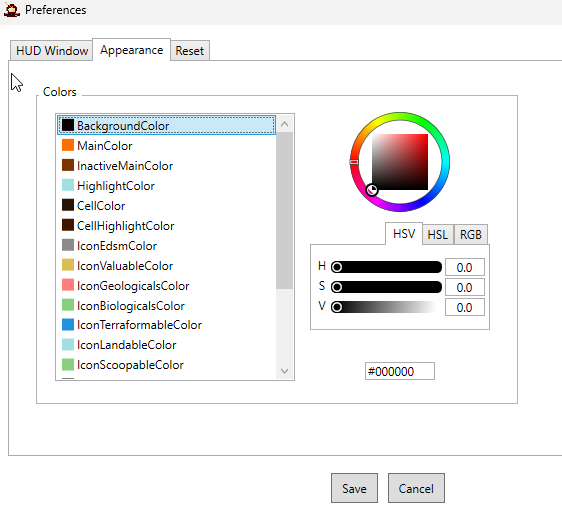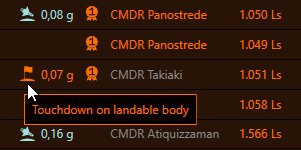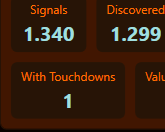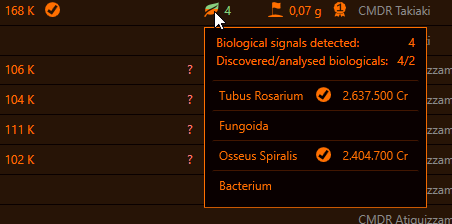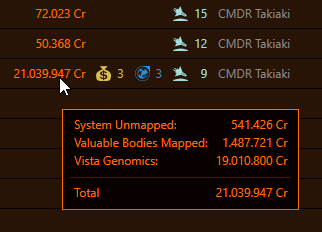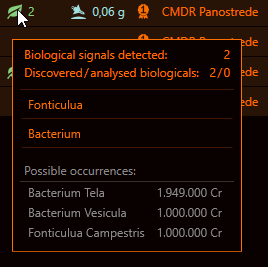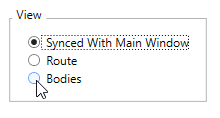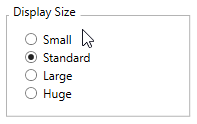unknown structure in delphi
{ "timestamp":"2019-04-09T18:05:53Z", "event":"SAAScanComplete", "BodyName":"Delphi 5 a", "BodyID":41, "ProbesUsed":4, "EfficiencyTarget":4 }
{ "timestamp":"2019-04-09T18:05:53Z", "event":"Scan", "ScanType":"Detailed", "BodyName":"Delphi 5 a", "BodyID":41, "Parents":[ {"Star":39}, {"Null":38}, {"Star":0} ], "DistanceFromArrivalLS":3098.503418, "TidalLock":true, "TerraformState":"", "PlanetClass":"Rocky body", "Atmosphere":"", "AtmosphereType":"None", "Volcanism":"", "MassEM":0.004991, "Radius":1196532.375000, "SurfaceGravity":1.389580, "SurfaceTemperature":173.568024, "SurfacePressure":0.000000, "Landable":true, "Materials":[ { "Name":"iron", "Percent":18.402405 }, { "Name":"sulphur", "Percent":17.989164 }, { "Name":"carbon", "Percent":15.127024 }, { "Name":"nickel", "Percent":13.918808 }, { "Name":"phosphorus", "Percent":9.684580 }, { "Name":"chromium", "Percent":8.276172 }, { "Name":"manganese", "Percent":7.600005 }, { "Name":"zinc", "Percent":5.001084 }, { "Name":"cadmium", "Percent":1.429030 }, { "Name":"tellurium", "Percent":1.370064 }, { "Name":"molybdenum", "Percent":1.201666 } ], "Composition":{ "Ice":0.000000, "Rock":0.910199, "Metal":0.089801 }, "SemiMajorAxis":1729036160.000000, "Eccentricity":0.001871, "OrbitalInclination":0.000500, "Periapsis":100.400818, "OrbitalPeriod":286148.750000, "RotationPeriod":286151.281250, "AxialTilt":-0.040470 }
US in HIP 19026
{ "timestamp":"2023-04-10T17:44:11Z", "event":"FSSBodySignals", "BodyName":"HIP 14782 A 1", "BodyID":5, "SystemAddress":79263844699, "Signals":[ { "Type":"$SAA_SignalType_Geological;", "Type_Localised":"Geological", "Count":3 } ] }
{ "timestamp":"2023-04-10T17:44:12Z", "event":"Scan", "ScanType":"Detailed", "BodyName":"HIP 14782 A 1", "BodyID":5, "Parents":[ {"Star":2}, {"Null":1}, {"Null":0} ], "StarSystem":"HIP 14782", "SystemAddress":79263844699, "DistanceFromArrivalLS":257.327965, "TidalLock":true, "TerraformState":"", "PlanetClass":"High metal content body", "Atmosphere":"", "AtmosphereType":"None", "Volcanism":"minor metallic magma volcanism", "MassEM":2.022620, "Radius":7474107.500000, "SurfaceGravity":14.431283, "SurfaceTemperature":549.523804, "SurfacePressure":0.000000, "Landable":true, "Materials":[ { "Name":"iron", "Percent":21.799196 }, { "Name":"nickel", "Percent":16.487999 }, { "Name":"sulphur", "Percent":15.409499 }, { "Name":"carbon", "Percent":12.957793 }, { "Name":"chromium", "Percent":9.803823 }, { "Name":"manganese", "Percent":9.002847 }, { "Name":"phosphorus", "Percent":8.295801 }, { "Name":"arsenic", "Percent":2.038730 }, { "Name":"niobium", "Percent":1.489859 }, { "Name":"tin", "Percent":1.412414 }, { "Name":"yttrium", "Percent":1.302040 } ], "Composition":{ "Ice":0.000000, "Rock":0.670034, "Metal":0.329966 }, "SemiMajorAxis":77142027020.454407, "Eccentricity":0.000048, "OrbitalInclination":-0.001790, "Periapsis":321.549330, "OrbitalPeriod":9026172.220707, "AscendingNode":-1.181035, "MeanAnomaly":143.774034, "RotationPeriod":9026236.575116, "AxialTilt":-0.223637, "WasDiscovered":true, "WasMapped":true }
Guardian ruins in Swoilz PA-F b3-2
{ "timestamp":"2022-04-24T19:38:16Z", "event":"ApproachSettlement", "Name":"$Ancient:#index=1;", "Name_Localised":"Ancient Ruins (1)", "SystemAddress":5084032673305, "BodyID":20, "BodyName":"Swoilz PA-F b3-2 B 2", "Latitude":-3.149535, "Longitude":112.979858 }
{ "timestamp":"2022-04-24T19:38:16Z", "event":"ApproachSettlement", "Name":"$Ancient:#index=3;", "Name_Localised":"Ancient Ruins (3)", "SystemAddress":5084032673305, "BodyID":20, "BodyName":"Swoilz PA-F b3-2 B 2", "Latitude":-47.407944, "Longitude":165.606949 }
{ "timestamp":"2022-04-24T19:38:16Z", "event":"ApproachSettlement", "Name":"$Ancient:#index=2;", "Name_Localised":"Ancient Ruins (2)", "SystemAddress":5084032673305, "BodyID":20, "BodyName":"Swoilz PA-F b3-2 B 2", "Latitude":23.498642, "Longitude":77.232887 }
{ "timestamp":"2022-04-24T19:38:21Z", "event":"Music", "MusicTrack":"Supercruise" }
{ "timestamp":"2022-04-24T19:38:21Z", "event":"Music", "MusicTrack":"SystemMap" }
{ "timestamp":"2022-04-24T19:38:35Z", "event":"SAAScanComplete", "BodyName":"Swoilz PA-F b3-2 B 2", "SystemAddress":5084032673305, "BodyID":20, "ProbesUsed":3, "EfficiencyTarget":4 }
{ "timestamp":"2022-04-24T19:38:35Z", "event":"SAASignalsFound", "BodyName":"Swoilz PA-F b3-2 B 2", "SystemAddress":5084032673305, "BodyID":20, "Signals":[ { "Type":"$SAA_SignalType_Guardian;", "Type_Localised":"Guardian", "Count":3 } ] }
{ "timestamp":"2022-04-24T19:38:35Z", "event":"Scan", "ScanType":"Detailed", "BodyName":"Swoilz PA-F b3-2 B 2", "BodyID":20, "Parents":[ {"Star":3}, {"Null":2}, {"Null":0} ], "StarSystem":"Swoilz PA-F b3-2", "SystemAddress":5084032673305, "DistanceFromArrivalLS":50392.517399, "TidalLock":true, "TerraformState":"", "PlanetClass":"High metal content body", "Atmosphere":"", "AtmosphereType":"None", "Volcanism":"", "MassEM":0.021809, "Radius":1821265.000000, "SurfaceGravity":2.620607, "SurfaceTemperature":292.511322, "SurfacePressure":0.000000, "Landable":true, "Materials":[ { "Name":"iron", "Percent":21.753004 }, { "Name":"nickel", "Percent":16.453060 }, { "Name":"sulphur", "Percent":15.360789 }, { "Name":"carbon", "Percent":12.916833 }, { "Name":"chromium", "Percent":9.783049 }, { "Name":"manganese", "Percent":8.983768 }, { "Name":"phosphorus", "Percent":8.269578 }, { "Name":"zirconium", "Percent":2.525972 }, { "Name":"cadmium", "Percent":1.689219 }, { "Name":"niobium", "Percent":1.486702 }, { "Name":"technetium", "Percent":0.778017 } ], "Composition":{ "Ice":0.000000, "Rock":0.670155, "Metal":0.329845 }, "SemiMajorAxis":11473538875.579834, "Eccentricity":0.000487, "OrbitalInclination":-0.004679, "Periapsis":349.553830, "OrbitalPeriod":1351055.800915, "RotationPeriod":1351059.845614, "AxialTilt":-0.302295, "WasDiscovered":true, "WasMapped":true }
 www.panostrede.de
www.panostrede.de

